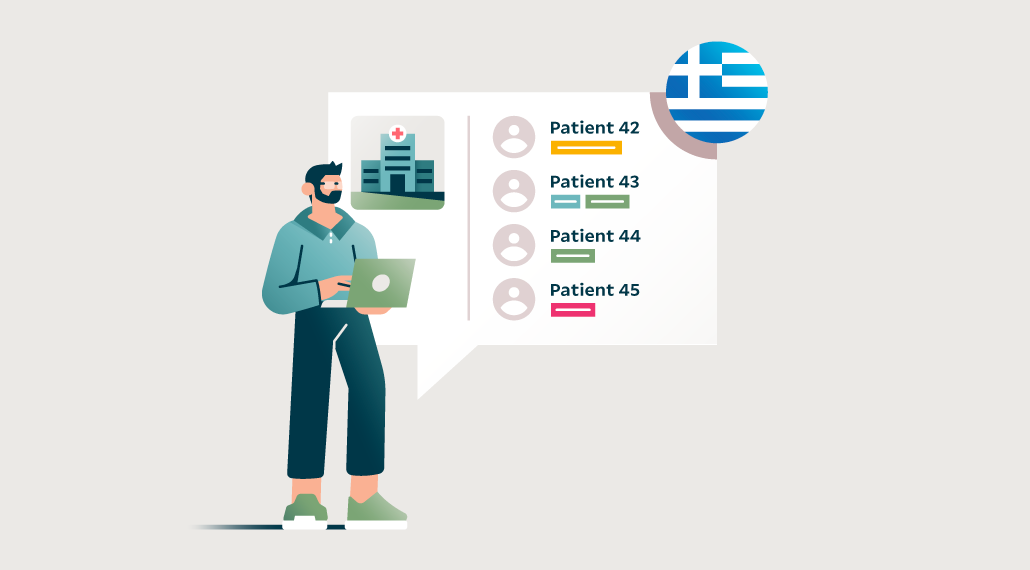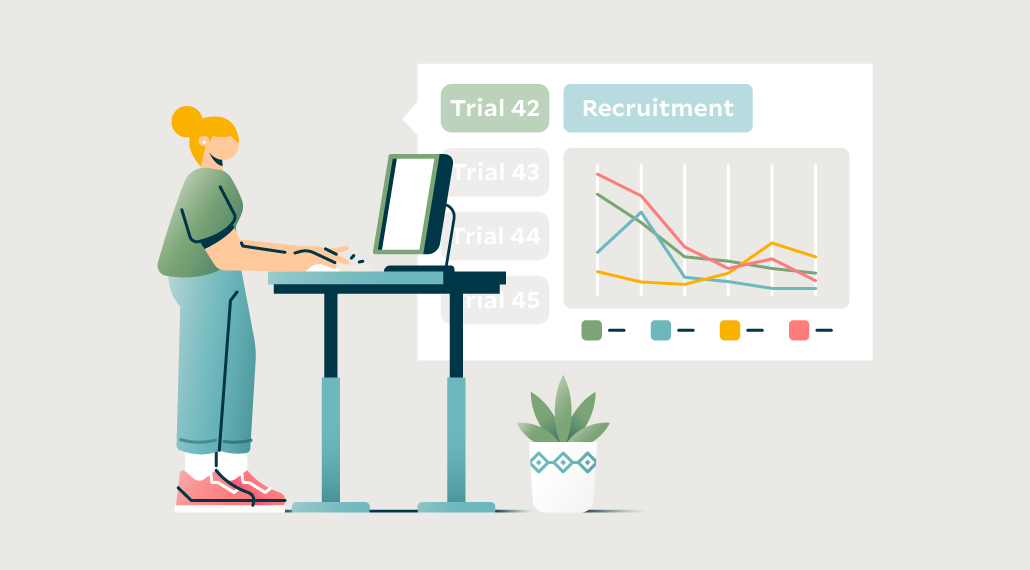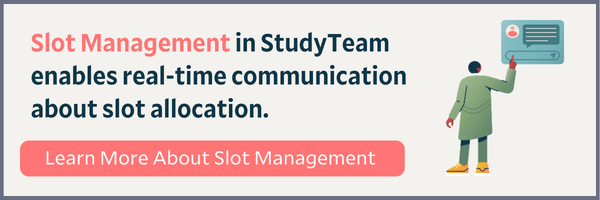October 16th, 2023
9 Ways to Reduce Clinical Trial Site Burden
By OneStudyTeam

As leaders in clinical research, sponsors can have the ability to drastically reduce elements of clinical trial site burden.
What is clinical trial site burden?
Clinical trial site burden refers to the summary of challenges that research sites face during a study. Those challenges can include operational inefficiencies, short staffing, increasingly complex protocols, financial management, and more.
How can sponsors reduce clinical trial site burden?
As a sponsor, when you support sites in reducing certain challenges, particularly operational inefficiencies within clinical trial workflows, you can ensure your site teams have more time to identify patients while focusing on their experience and well-being. Early on in a trial, this can accelerate recruitment and enrollment timelines. Consider these 9 ways to reduce elements of pharmaceutical site burden.
(1) Prepare site teams for effective pre-screening.
(2) Improve clarity and specificity within your protocol’s Schedule of Activities.
(3) Make it easier for sites to receive and process patient referrals.
(4) Provide sites with a digital patient database for cross-trial use.
(5) Ensure the technology you require sites to use comes with online learning capabilities, to reduce the burden of onboarding.
(6) Identify why patients are voluntarily dropping out of the enrollment funnel.
(7) Improve clarity within any protocol amendment.
(8) Make it easier for sites to submit and review slot requests.
(9) Predict enrollment risks to support sites sooner.
(1) Prepare site teams for effective pre-screening.
Pre-screening activities are conducted prior to the informed consent stage of the enrollment process, with a goal to gather information about patient eligibility. As a sponsor, you want that early data in order to better inform recruitment and enrollment strategies – so it’s critical to set that data-collection expectation for site teams prior to site activation. Prepare your site teams for effective and easy-to-manage pre-screening during the clinical study startup process:
- Use Site Initiation Visits to introduce the pre-screening platform they will use, so site teams can plan to integrate that into their workflows.
- Prior to activation, set up training sessions or an online learning portal for site teams to educate them in using the selected pre-screening platform, so the learning process won’t interrupt their recruitment workflow.
Site staff who use the StudyTeam platform to manage pre-screening also get connected to our global Customer Success team, which provides ongoing support to site teams from training and activation through enrollment.
(2) Improve clarity and specificity within your protocol’s Schedule of Activities to prevent lost time due to follow-ups.
A lack of clarity in the Schedule of Activities, or your protocol’s equivalent section, can lead to a series of follow-up conversations with site teams who need to ensure they have a complete understanding of how to precisely follow the protocol. This creates more work and lost time for sites, either before trial startup or during the trial. Be as clear as possible in your clinical trial protocol writing from the start by:
- Using numbers to clarify how many days are in a month, such as “31 days;”
- Establishing the milestone that triggers a visit or a set of visits, such as “12 months after the last dose;”
- Clarifying exact visit window tolerances, such as “4 weeks +/- 5 days.”
(3) Make it easier for sites to receive and process patient referrals, saving time and effort.
Sponsor recruitment campaigns can help drive more potential candidates to site teams, taking the search for additional patients off their task list. But those campaigns can inadvertently cause more work for sites when they have to process referrals from multiple sources – emails, phone calls, various vendor portals. Provide site teams with a platform that can integrate with a variety of patient sources and receive patient referral information in one place for easy processing.
StudyTeam automatically receives patient referrals through our Referral Partner Interface (RPI). Once they log into StudyTeam, site teams can review, pre-screen, and enroll patients from that one, centralized location, minimizing data entry.

(4) Provide sites with a digital patient database for cross-trial use, to more quickly identify candidates.
Often, recruitment efforts are compartmentalized to focus on one trial at a time, so there is one pool of potential candidates per trial with no crossover. But when site teams are equipped with a filterable, digital patient database, their pre-screening efforts for one trial automatically benefit their patient identification efforts for other trials.
Within StudyTeam, site teams input patient information including research indications, diagnoses, and I/E criteria details during the recruitment process. If those patients don’t enroll in one trial, they remain stored in the database to be considered for other current or future trials. Sites can quickly filter by diagnosis and research indication to review a patient profile when working to identify candidates for any trial.
(5) Ensure the technology you require sites to use comes with online learning capabilities, to reduce the burden of onboarding.
Technology can accelerate so many site tasks, from patient identification to processing referrals. But sites also need to learn how to use that technology first – which can incur burden. Choose site-facing technology that comes with an online learning portal. This approach can actually help reduce the burden of learning another platform by offering benefits such as:
- The flexibility of self-paced learning;
- Bite-sized content and lessons that fit well with busy site schedules;
- The ability to view – and review – content at any time.
(6) Identify why patients are voluntarily dropping out of the enrollment funnel, to remove barriers to site enrollment goals.
When sites go through the work of pre-screening highly qualified candidates who are likely to enroll, only to have those candidates choose to discontinue the enrollment process, valuable time is lost. Additional work is required to pre-screen even more candidates to meet enrollment goals. On the sponsor side, you can take time to identify patterns in reasons patients drop out of your clinical trials, then determine actionable steps to address those reasons and to keep more patients in the enrollment funnel.
When you and your sites use StudyTeam, it’s easy for sites to check off reasons patients decline to participate. It’s just as easy, then, for you to view a Reasons Declined Report generated in StudyTeam to pinpoint any patterns in drop out.
(7) Improve clarity within any protocol amendment to prevent lost time due to follow-ups.
Once again, unclear language can cause lengthy follow-ups with site teams to ensure they have the understanding they need to avoid protocol deviations based on updated requirements. Site teams are likely juggling protocols across multiple trials, and each protocol could go through multiple amendments. Prevent disruptions to site workflows by:
- Tracking changes that have been made to the protocol. Highlighting updated text is a good method.
- Staying consistent with numbering when updating I/E criteria. Don’t change original numbers, just add new ones.
This can help sites adapt to protocol amendments in your clinical trials while maintaining data integrity.
(8) Make it easier for sites to submit and review slot requests, to reduce enrollment delays.
A short time frame for early phase clinical trials can increase pressure on sites to manage patient slot allocation efficiently, and developing an efficient system can be difficult if requests and updates are split up across spreadsheets, phone calls, and emails. Simplify slot management and communication with site teams by working within one shared system.
StudyTeam has a built-in Slot Management feature that sites and sponsors both use to manage and update slot requests. Email alerts notify both parties when new or updated information is ready to review, preventing lags in the slot management workflow.
(9) Predict enrollment risks to support sites sooner.
With the right data, machine learning can train algorithms to generate predictions about future data. Those predictions can build out an enrollment forecasting report as enrollment is starting up to indicate the likely path of a trial, including insights into which sites may experience difficulty enrolling patients. From here, you can determine options for how to proactively support those specific sites. If enrollment is projected to lag, could you get ahead with a recruitment campaign?
At OneStudyTeam, we built an enrollment forecasting engine on top of our StudyTeam platform to provide sponsors with study risks and projections, so they can develop informed and proactive strategies.
Take simple steps to reduce pharmaceutical site burden.
When your aim is to reduce operational inefficiencies for site teams, most steps require that you embrace digital transformation in your clinical trials. With the right technology and workflow-enhancing features and tools, you can more easily identify and alleviate certain site challenges. This not only supports your site teams, but clears the way for faster recruitment, enrollment, and achievement of trial objectives.
Related Posts

How Does a Trial Manager in Greece Improve Clinical Trial Operations with StudyTeam®?
Dimitris Tziogas, local trial manager at a biotechnology company in ...
Read More
How to Address Key Clinical Trial Challenges, According to Clinresco Centres in South Africa
There’s no single solution to overcoming a research site’s specific ...
Read More
3 Clinical Trial Billing Challenges Research Sites Solve with StudyTeam
Challenge 1: Complicated coverage analysis Challenge 2: Tedious budgeting ...
Read More


.png?width=64&name=OST%20Transparent%20(1).png)